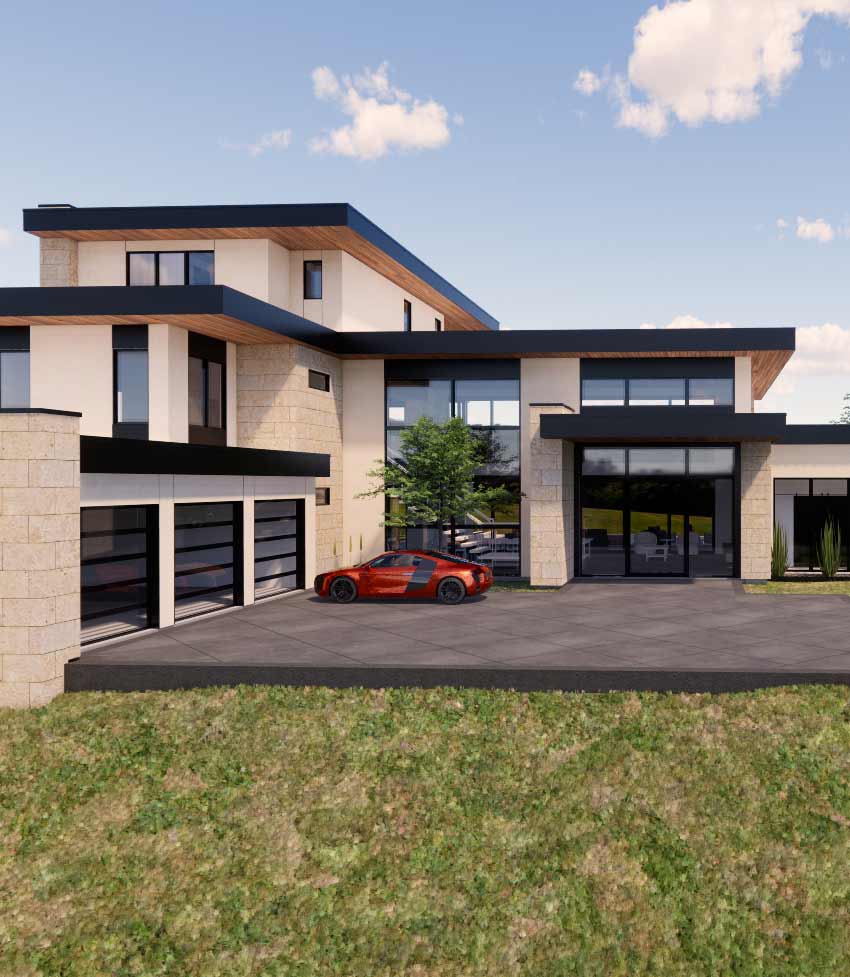
WHEN BUILDING A CUSTOM HOME, the design is an essential aspect of the project. It’s what sets the tone and character of the house and, ultimately, defines the homeowner’s lifestyle.
Start with a Vision
It can be an exciting and challenging process, especially for first-time home builders. To ensure a successful outcome, the following tips should be considered when creating custom home architecture.
1. Start with a vision
To achieve a remarkable custom home design, you need to have a clear vision of what you want to achieve. You should have a rough idea of the size, style, and general layout of the house. Start by creating a list of must-have features and amenities, and identify what you like and don’t like. Doing this will provide a solid foundation for the design process, ensuring that your vision is reflected in the final product.
2. Work with an experienced Custom Home architect
Collaborating with an experienced architect is vital for creating a custom home design that meets your needs and exceeds your expectations. The architect will help you translate your vision into reality while considering important factors such as functionality, safety, sustainability, and budget. They can also provide valuable insights and suggestions based on their expertise, ensuring a successful design outcome.
3. Consider the site and environment
The site and environment are crucial aspects to consider when designing a custom home. The architecture should complement the landscape and take advantage of the natural features of the site, such as the orientation, topography, and views. The design should also be mindful of the local zoning laws, building codes, and environmental regulations. See here for more on using nature as the highlight of your room.
4. Focus on functionality and flow
Functionality and flow are key elements of custom home design. A well-designed house should be functional and easy to navigate, allowing for comfortable living and entertaining. The design should consider the flow of traffic, privacy, noise levels, and lighting to create a cohesive and harmonious living space.
5. Prioritize natural lighting
Natural lighting is a critical element in custom home design. It creates a welcoming and inviting atmosphere, improves energy efficiency, and enhances the visual appeal of the house. The design should prioritize natural lighting by considering the placement and size of windows, skylights, and doors. Learn more about importance of Maximizing Natural Light in Your Home here.
6. Choose high-quality materials for Custom Home Architecture
Selecting high-quality materials is crucial for achieving an outstanding custom home design. The materials should be durable, sustainable, and aesthetically pleasing. They should also be suitable for the local climate and environment, ensuring that the house is comfortable and efficient.
7. Incorporate technology
Incorporating technology into the custom home design can improve the overall functionality and enjoyment of the house. Consider including smart home features such as lighting, temperature control, and security systems. The
design should also accommodate the latest entertainment systems and communication technologies.
8. Budget carefully
Creating a custom home design can be an expensive endeavor, so it’s essential to budget carefully. Consider all the costs associated with the design and construction process, including land purchase, architecture, permits, materials, and labor. Set a realistic budget and stick to it to avoid overspending.
9. Be flexible
Flexibility is crucial when designing a custom home. You may encounter unexpected challenges or changes during the design and construction process, so it’s essential to be adaptable and open to modifications. Be willing to compromise on some features to ensure that the final design meets your overall goals and budget.
10. Plan for the future
When designing a custom home, it’s important to plan for the future. Consider your long-term goals and lifestyle changes that may occur over time, such as expanding your family or aging in place. The design should accommodate these changes, ensuring that the house remains functional.


